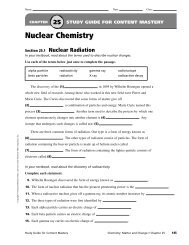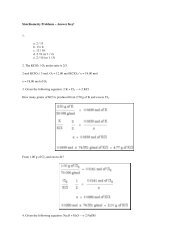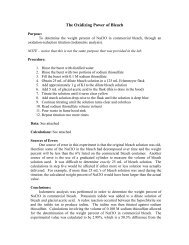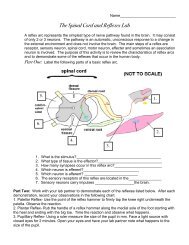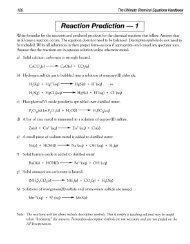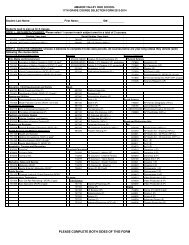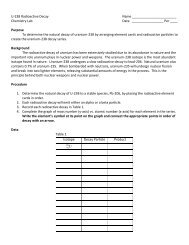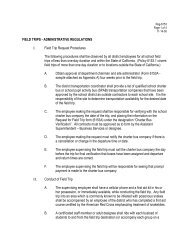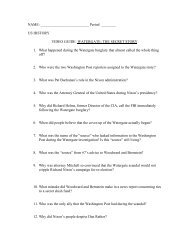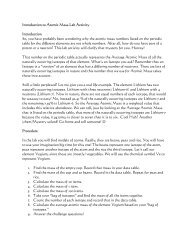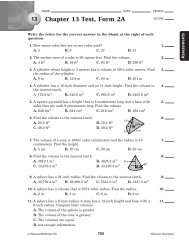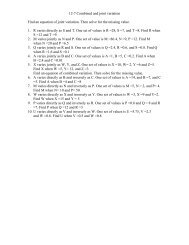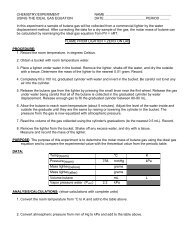Lab Topic Three
Lab Topic Three
Lab Topic Three
Create successful ePaper yourself
Turn your PDF publications into a flip-book with our unique Google optimized e-Paper software.
_T-4. Compare your observations ol Elodeausing the compound scope withthose made in Exercise 3.3 using the stereoscopic sc.pe . List the structuresseen wlth each:Stereoscopic:Compound:Animal Cellsl. Animals are multicelluiar heterotrophic organisms that ingest organrcmaner. They are composed of ce11s that can be categorized into fourmajor tlssue groups: epithelial, connective, muscle, and nervous trs_sue. In this lab study, you r,vi11 examine epithelial cel1s. similar to theepidermal cells of plants, epithelial cells occur on the outside of animalsand serve to prorect the animal from water loss, mechanical ir-r.]ury,and loreign invaders. in addltlon, epithelial cells line interior cavrtiesand ducts in animals. Examine the epirheliar cells (Figure 3.11) thar /^\form tl-re linlng of yourCyinneroolasrrcheek. To obtain a speciJen, follow thlsprocedure:a. with a clean toothpick, gentl)/ scrape the rnside of your cheek severaltlmes.b R:rll the scraping into a drop of warer on a clean microscope slide,add a srnall drop of methylene blue, and cover wirh a coveislip.c. Using the compound microscope, r,-iew the cells under higher powers.2. observe that these ce1ls are extremeiy flat and so may be folded over onthemselves. Arrempt to locate several ce11s that u." ,-rot badly iolded,and study their detail.] ldcnrify rhc following srrucrures;The cell membrane is the boundary that separates the cell from itssurroundings.The nucleus is the 1arge, circular organelre near the micldle of the cell.cytoplasm is the granular contents of the ce1l, exclusive of the nucleus.uelimembraneNrc.ersFigure 3.11.Human epithelial cells. The epirhellalcel1s that line your cheek are thtn, flatcells that you can remove easily fromyour cheek by scraping ir with a toorhpick.(See Color Plate 7.)<strong>Lab</strong> Study D. UnknownsMaterialsmicroscope slidescoverslipspond water or culture of unknownsIntroductionuse this lab study to see if you ha'e met the objectives of this lab toprc. asyou carry our this lab study, (1) think carefully about using correcr microscopictechniqr-res; (2) dlstinguish organisms wirh differenicellular organrz-ationor configuratlon; (3) note how the clifferenr organisms are similai yetdifferent; and (,1) nore cell differences.



